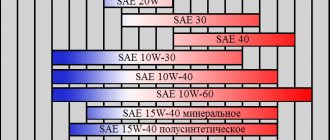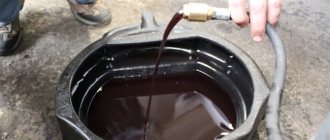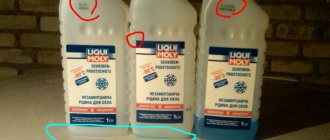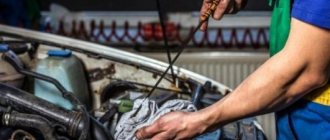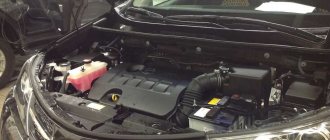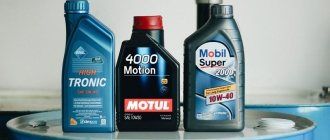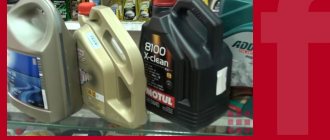Industrial hydraulic oil is an essential component of any hydraulic system. It protects the main components and parts of the machine from premature wear, ensures full and correct operation of the hydraulic system in various climatic conditions.
The main purpose of hydraulic oil is to protect metal equipment from corrosion and premature wear.
In mechanics, hydraulic oil is the working fluid of hydraulic systems. Excellent efficiency and broad capabilities make these oils universal for use in various technological schemes. Science has proven that about 70% of hydraulic system failures occur due to improper condition of the working fluid. This once again proves that oil is the main element of any hydraulic system.
A Question of Choice
The logical conclusion can rightly be considered the question of what is better when comparing hydrocracking and synthetic oil.
This is exactly the question motorists ask when choosing the right lubricating oil for their car engine. Based on everything said earlier, we can draw some conclusions, which will largely answer the question posed. When you buy oil for your car's engine, consider several factors. Recommendations from the car manufacturer. The car companies themselves carefully test the engines and check which oils and under what conditions they will work in optimal mode and will be able to serve for a long time and without problems. As a result, a specific list of recommended oils is compiled. Some recommend only one branded lubricant, while others give a whole list. Firms are indicated only those with which the automaker itself works closely. But the characteristics of the oil are universal. And if among the recommended ones there is oil made using hydrocracking technology, you can safely take it. It is extremely rare to encounter situations where an automaker strongly discourages the use of lubricants made through special hydrocracking processing. In contrast to the bans on the use of the same pure mineral water or semi-synthetics. Financial question. You probably already remember that the cost of synthetic lubricating oil is several times higher than the price of hydrocracking compounds with virtually identical properties and characteristics. And here the advantage is objectively on the side of hydrocracking compositions, since they significantly save the budget. But do not forget that there is the first point of the rules for choosing between synthetics and hydrocracking. If the manufacturer allows the use of HA and synthetics, then in order to save money, you can safely take the first option. Manufacturer and characteristics. A lot depends on the oil manufacturer itself. Even high-quality synthetics are not always the same if they are produced by a dubious company. Likewise, the technology for synthesizing mineral water has not been perfected for everyone. Some carry out simple manipulations with petroleum products, but call their processing technology hydrocracking
Therefore, it is extremely important to use products from proven and well-established companies. There are quite a lot of them, and about each of them you can find out all the information you are interested in.
As a result, we see that the popularity of hydrocracking is gradually increasing; these oils are becoming a worthy alternative to expensive synthetics and can fully replace them in the foreseeable future. No one denies that in some respects synthetics are better. And when the manufacturer does not recommend adding HA oil, you should not violate this requirement. In situations where the engine is not incredibly demanding and can only be powered by high-quality and expensive synthetics, hydrocracking will perfectly replace it and will be able to ensure efficient, trouble-free and trouble-free operation of the engine.
Each car owner must decide for himself what exactly to choose. Hydrocracking technology objectively makes it possible to achieve excellent quality and characteristics with simpler and more affordable processing of mineral components. And when a high-quality product from leading manufacturers is poured into the engine, there is definitely no need to fear that the engine will begin to perform worse than with pure synthetics. Indeed, with the current classification of oils, a motorist may not even suspect that the engine of his vehicle contains processed mineral water. And he will be sure that he filled it with good synthetics.
Reviews
On various automotive forums, users do not have a clear opinion about hydrocracking oil. Reviews about it are both positive and negative. In particular, buyers are confused by the fact that hydrocracked oil is a mineral refined oil with an improved molecular structure. Therefore, many car owners have a mistrust of products obtained by hydrocracking. They continue to use full-fledged synthetics and do not dare to take risks.
Another audience is satisfied with the quality of hydrocracking oils. Many owners are not afraid to use it at all and calmly pour it after 7-8 thousand kilometers. Such drivers note that such oils are much better than semi-synthetic ones, because the latter are not regulated by the mineral/synthetic ratio. That is, such oil can contain 90% mineral oil and 10% synthetic oil. Therefore, in any case, it is better to use hydrocracking lubricant than to pour “semi-synthetic” into the engine.
what is it and how to choose it
Nissan X-Trail RedBull Logbook Changing the oil and filter in an automatic transmission
New products in the field of lubricants are increasingly appearing on the shelves of domestic stores selling goods for car owners
One of them was hydrocracking oil, which immediately attracted the attention of the automotive community. Many heated debates have broken out between professionals and amateurs in attempts to answer the question: what is hydrocracking and hydrocracking motor oil?
A little about oil refining
To improve the quality of lubricants obtained from petroleum products, they are purified from individual elements, for example, sulfur. Depending on the depth of processing, three chemical processes are distinguished: dewaxing, hydrotreating and hydrocracking. In each of them, the oil is exposed to high temperatures and pressure and acquires certain properties (pour point, resistance to oxidative processes), changes color and is purified.
Under the intricate chemical term “hydrocracking”, oil refining industry specialists understand a technological process aimed at transforming the structure of petroleum products in order to obtain higher quality characteristics of oils at a relatively low cost. Simply put, hydrocracking oil is a kind of symbiosis of mineral and synthetic oils.
They are based on oil that has undergone special processing under high pressure and temperature. Depending on the intensity of the process and the depth of processing, soft or hard cracking is distinguished. The essence of the chemical process is to separate heavy hydrocarbon chains into shorter and lighter ones (cracking) while simultaneously transforming their structure due to saturation with hydrogen (hydrogenation).
As a result, practically nothing remains of the mineral base, and the properties of the resulting oil become close to those of their synthetic counterparts. Hydrocracked oils have excellent viscosity characteristics, are less aggressive (seals will last much longer), and the additives they add allow them to outperform certain representatives of semi-synthetic oils. Due to their characteristics and price range, they can become a worthy replacement for “synthetics”.
Quality oils: choice
Having understood what hydrocracking lubricants are, it is worth paying attention to their performance suitability. These oils, like all others, have a number of disadvantages that manifest themselves during engine operation.
Firstly, there is a high evaporation rate, which leads to significant oil losses in everyday use.
Secondly, low resistance to oxidative reactions and rapid obsolescence, which requires more frequent replacement compared to a synthetic analogue. And finally, thirdly, a lower viscosity-temperature index, which does not allow hydrocracking lubricants to be placed on a par with “synthetics”. Although nominally, according to the classification, they belong to the category of synthetic.
You should choose a time-tested motor lubricant
What is a good oil? Which lubricants to choose: synthetic, mineral or hydrocracking? Many car enthusiasts often rack their brains for a long time over difficult choices. But the answer is quite simple: you should only use the specifications recommended by the manufacturer of your car for regular use.
At the same time, leading manufacturers of automotive lubricants do not always draw the buyer’s attention to the fact that hydrocracking is used in the production process. Therefore, it is not possible to distinguish the product without additional research.
It is worth remembering that hydrocracking oil is cheaper than “synthetics”. This can become a distinctive feature.
Hydrocracking oil or synthetic oil – which is better to choose?
It is difficult to give advice regarding the choice of oil, because each model and brand of car has its own unique product. If one car “loves” hydrocracking lubricant, this does not mean that a second similar vehicle will also work effectively on it. Therefore, check the instructions for your car to find out which lubricants are best to use.
But to summarize, full synthetic oil is better due to its longer service life. Some experts also say that good synthetic-based lubricants create stronger protective films on engine friction pairs, and hydrocracking oils are inferior to them in this parameter. This, of course, can be argued. However, you will not find a contrary opinion that would claim that hydrocracking lubricant is better than real “synthetics”. Therefore, the conclusion is this: although synthetic oil is more expensive, it is still better. Hydrocracking lubricants are somewhere in the middle between “synthetic” and “semi-synthetic”. Or rather, not in the middle, but closer to “synthetics”.
Hydrocracking - vacuum gas oil
Pan gasket
Relatively shallow hydrocracking of vacuum gas oil to obtain the target product of the diesel fraction can be carried out in one stage even at a pressure of 4 - 6 MPa, a temperature of 420 - 425 C, a volumetric flow rate of raw materials of 1 1 hour and a hydrogen circulation rate of 550 - 700 m3 per 1 m3 of raw materials . When obtaining jet fuel and gasoline as target products, increased pressure and a two-stage process scheme are required.
For hydrocracking of vacuum gas oil, VNII NP has created zeolite-containing catalysts GK-9, GK-38, GK-87 and GK-4. The first three catalysts are designed for single-stage processes to produce primarily middle distillates such as jet fuel for modern aviation or low pour point diesel fuels. Gasoline is an undesirable by-product in such a process. Among themselves, the named catalysts differ in nuances in terms of the selectivity of the process and the quality of the target product. The GK-8 catalyst provides a slightly higher conversion of raw materials and at the same time has greater potential for improving the quality of products (due to yield); the GK-87 catalyst is more selective for achieving a high yield of middle fractions. The non-zeolite catalyst D-48, which competes with it, was developed by Sredaz-NII NP. The GK-38 catalyst occupies an intermediate position.
| Material balance two-stage. |
For example, hydrocracking of vacuum gas oil containing 1 4% sulfur and 0 08% nitrogen was carried out according to a single-stage scheme at 3 5 - 3 7 MPa, temperature in the reactor 420 - 425 C, volumetric flow rate of feedstock 1 1 h 1 and the circulation rate of hydrogen-containing gas 550 - 700 m3 per 1 m3 of raw materials. In this case, up to 45% (wt.) of diesel fuel was obtained. Hydrogen consumption is 0–81% (wt.) for raw materials.
Yield of vacuum gas oil hydrocracking products when obtaining a full range without recirculation of heavy fractions (% vol.
A process has been developed for the double-stage hydrocracking of vacuum gas oil at a pressure of 10 0 Pa in order to obtain a winter diesel mixture using a new magnesium silicate catalyst.
The apparent activation energy for hydrocracking of vacuum gas oil, cracking residues and fuel oil in the temperature range 380 - 460 C is 125 - 210 kJ / mol.
| Scheme of hydrocarbon conversion under hydrocracking process conditions. |
The apparent activation energy for hydrocracking of vacuum gas oil in the temperature range 380 - 420 C is 140 - 250 kJ / mol.
The main industrial catalysts for hydrocracking of middle distillate vacuum gas oil are nickel - (cobalt) - molybdenum (tungsten) compositions. When choosing the composition and method of synthesis of hydrocracking catalysts of this type, they start from basic catalysts for the hydrotreating of heavy petroleum feedstocks, increasing their decomposition properties in relation to paraffin and naphthenic hydrocarbons and maintaining their effectiveness in hydrotreating and hydrogenation reactions.
During hydrotreating and hydrocracking of vacuum gas oil, the completeness of vanadium removal exceeds 9b%, the completeness of sodium removal is two times lower. From this point of view, the desalting of oil, on which the sodium content in it depends, becomes very important.
Calculate the thermal effect of the vacuum gas oil hydrocracking process at 360 - 500 C, if the yield of products is known (wt.
Calculate the thermal effect of the vacuum gas oil hydrocracking process at 360 - 500 C, if the yield of products is known (wt.
Nick shows the yields of hydrocracking products of heavy vacuum gas oil, carried out in the presence of conventional and zeolite catalysts.
The VNII NP has developed a process for hydrocracking vacuum gas oil at a pressure of 15 MPa. The industrial plant was designed by the VNIPIneft Institute; The main option is the processing of vacuum gas oil from sulfurous oils with a predominant mixture of winter diesel fuel. The possibility of processing gas oils of secondary origin is also provided. Options have been developed with the primary production of jet fuel, Arctic and summer diesel fuels. The processes differ in the temperature regime in the reactors and the number of stages. In the option with the maximum yield of diesel fuel, the process is carried out in one stage; in the jet fuel option and when producing Arctic diesel fuel, a two-stage option is preferable. In the project, this option is designed as a backup option.
Hydrocracking
Changing the oil in the Haldex coupling on a Tiguan
Hydrocracking is carried out at moderate pressure (3 - 20 MPa), lower consumption of hydrogen and catalyst, but with a higher degree of conversion of cheap petroleum feedstock compared to the hydrogenation of coal.
Hydrocracking makes it possible to obtain a wide range of high-quality petroleum products (C3-C4 liquid gases, gasoline, jet and diesel fuels, oil components) with high yields from almost any petroleum feedstock by selecting appropriate catalysts and technological wells - VRI, is one of cost-effective, flexible and most deepening oil refining processes.
Hydrocracking can be considered as a combined process in which the reactions of both hydro-genolysis (that is, the cleavage of C-S, C-N and C-O bonds) and dehydro-hydrogenation, as well as cracking (that is, the cleavage of the C-C bond) are simultaneously carried out. , but without coc: formation, with the production of products of lower molecular weight - lar 1st, in comparison with the feedstock, purified from hetero - atoms, not containing olefins, but less aromatized than with catalytic cracking.
| Facilitators of light hydrocracking processes. |
Hydrocracking is an effective and extremely flexible catalytic process that makes it possible to comprehensively solve the problem of deep processing of vacuum distillates (HC VD) with the production of a wide range of motor fuels in accordance with modern requirements and the needs of certain fuels.
Hydrocracking is a process of processing various petroleum distillates (less commonly, residues) under hydrogen pressure at moderate temperatures on bifunctional catalysts with acidic and hydrogenating properties. The latter makes it possible to obtain products without coke formation, which are in many ways similar to catalytic cracking products, but are much less aromatized, purified from heteroatoms and do not contain olefinic and diene hydrocarbons.
Hydrocracking is carried out at moderate pressure (3 - 20 MPa), lower consumption of hydrogen and catalyst, but with a higher degree of conversion of cheap petroleum feedstock compared to the hydrogenation of coal.
Hydrocracking makes it possible to obtain a wide range of high-quality petroleum products (liquefied gases C3 - C4, gasoline, jet and diesel fuels, oil components) with high yields from almost any petroleum feedstock by selecting appropriate catalysts and technological conditions; it is one of the cost-effective, flexible and most profound oil refining processes.
Hydrocracking can be considered as a combined process in which the reactions of both hydrogenolysis (that is, the cleavage of C-S, C-N and C-O bonds) and dehydrogenation, and cracking (that is, the cleavage of the C-O bond) are simultaneously carried out. C), but without coke formation, with the production of products of lower molecular weight compared to the feedstock, purified from heteroatoms, not containing olefins, but less aromatized than during catalytic cracking.
Hydrocracking is an effective and extremely flexible catalytic process that allows a comprehensive solution to the problem of deep processing of vacuum distillates (GVD) with the production of a wide range of motor fuels in accordance with modern requirements and needs for certain fuels.
Hydrocracking makes it possible to obtain a wide range of petroleum products from almost any petroleum feedstock by selecting appropriate catalysts and conditions and is one of the most efficient and flexible petroleum refining processes.
Hydrocracking (English, hydrogen cracking) is a thermocatalytic process of processing hydrocarbon raw materials, the purpose of which is to obtain light petroleum products from heavier raw materials.
Hydrocracking is a relatively young process that appeared in the early 1960s; in contrast to the catalytic cracking process, it is carried out with the input of hydrogen from the outside and practically without the removal of excess carbon. If the raw material contains many harmful impurities, it is pre-hydrotreated.
Hydrocracking during the reforming process, as a rule, plays a negative role, since a significant amount of gaseous products is formed, which reduces the yield of gasoline. To reduce the contribution of hydrocracking, it is necessary to reduce the partial1 pressure of hydrogen. A significant decrease in the partial pressure of hydrogen can lead to rapid coking of the catalyst. Therefore, it is necessary to continuously regenerate the catalyst.
Hydrocracking of atmospheric and vacuum gas oils, coking gas oils and catalytic cracking to produce gasoline, jet and diesel fuel.
what is Auto-Moto24.ru
A large number of car owners claim that this type of oil belongs to the semi-synthetic group. Others, having carefully looked at the description of the product, will read that they are looking at mineral raw materials that were produced by a plant using synthetic technologies. At the same time, on forums of car enthusiasts, information comes across that this oil better protects engine elements and is much cheaper than synthetic oils. Let's look at this in more detail.
The concept of hydrocracking oil
So, in order to understand this oil, you need to understand hydrocracking technology. Hydrocracking is a special processing of petroleum feedstocks that is used to produce base oils with a significant viscosity index. The method is based on hydrocatalytic oil refining. Due to this, “bad” fractions are removed by converting them into carbohydrates. Thus, the result is an oil similar in properties to synthetic, but much cheaper.
Hydrocracking oil
Accordingly, hydrocracking oil is a base oil that is produced by a special method (hydrocracking) and has high performance characteristics at low production costs.
The method for producing such oil is in many ways similar to the production of mineral oil, but during the manufacturing process its molecular structure completely changes. Oil undergoes significant processing and removal of undesirable components, and we all know that “black gold” contains a large number of various impurities that negatively affect the quality of the final product.
Production of hydrocracking oils
So, when producing such oil, the technology for producing mineral oil is taken as the basic technology. The oil undergoes special atmospheric distillation. The heavy fractions that remain serve as raw materials for hydrocracking oil.
Once mineral oil is obtained, it undergoes three stages of purification:
1. Dewaxing is the process of chemically removing harmful paraffins. Their negative effect is to increase the pour point of engine oil.
2. Hydrotreating - the effect of hydrogen on oil at high temperature and high pressure. As a result of this procedure, the oil's resistance to oxidative processes increases.
3. Direct hydrocracking - removes sulfur and nitrogen from raw materials and serves to create a base oil with high performance.
Having gone through all these phases, the output of production is an excellent oil with good performance characteristics.
Characteristics of hydraulic oil
Hydraulic oil viscosity
- Temperature and viscosity characteristics. They are key when choosing oil for the pump. Be sure to consider the pump type, minimum and maximum viscosity. The highest viscosity value at which the pump can operate is called maximum viscosity. Its high value significantly complicates the pump stroke at low temperatures, as a result of which rapid failure of the pump is possible. The minimum viscosity also has an effect; if the oil is too thin, leaks from the hydraulic system are possible. With very low viscosity, high wear of parts occurs. Optimal viscosity is achieved with minimal resistance to pumping fluid and high-quality lubrication of pump parts.
- Anti-foam characteristics. Designed to reduce the mixture of oil with oxygen and the formation of foam, which has a bad effect on viscosity characteristics and also negatively affects spare parts.
- Antioxidant characteristics. Designed to reduce oxidative processes occurring inside the hydraulic machine as a result of temperature differences.
- Demulsifying characteristic. Determines the possibility of water settling. Oils with low demulsifying characteristics, when watered, create persistent water emulsions. This has a bad effect because as a result, viscosity decreases, friction conditions change, metal surfaces become corroded, and the pour point increases.
- Anti-corrosion characteristics. They influence the prevention of metal corrosion in the hydraulic system.
- Anti-wear characteristics. Special additives that reduce equipment wear.
Light hydrocracking
Light hydrocracking is a process that takes place at a pressure of 5 MPa and a temperature of 380-400 ° C and an excess of hydrogen in one reactor (stage), which is aimed at obtaining raw materials.
Typical material balance of light one-stage hydrocracking
| Products | Yield % for raw materials |
| Total taken: | 101,23 |
| Vacuum (Fr. 350-500 °C) | 100 |
| VSG (hydrogen gas) | 1,23 |
| Total received: | 101,16 |
| Hydrocarbon gases | 0,58 |
| Hydrogen sulfide | 1,43 |
| Gasoline fraction | 4,21 |
| Diesel fraction | 34,0 |
| Hydrotreated fraction 350–500 °C | 59,29 |
| Losses (including VSG for blow-off) | 1,65 |
Diesel fuel quality:
| indicators | Diesel fuel 165—360 °C |
| Density kg/m³, | 840 |
| Sulfur content % mass, | 0,005 |
| Iodine number g I2/100 g. | 2,0 |
| Pour point, °C | −15 |
| 50-52 |
How to distinguish oils
It is not always possible for a motorist, even one with extensive experience in operating vehicles, to easily distinguish a hydrocracking composition from a synthetic one. If the manufacturer has not provided for the presence of appropriate designations and markings, it is possible to identify HA and distinguish it from synthetics only by using indirect signs. Therefore, there are several main ways to distinguish between compositions.
- Markings and inscriptions. Here you can only count on the presence of an inscription like HC-synthesis on the product label. Moreover, the manufacturer does not always try to make such an inscription clearly visible and visible at a quick glance at the packaging. Therefore, it is worth searching and carefully looking at the container. If the inscription HC is indicated, then this is definitely a hydrocracking lubricant composition for the engine.
- Price. This is already an indirect sign that allows you to distinguish between synthetics and hydrocracking. Since the production technology of HA oils is much cheaper than synthetic ones, this is directly reflected in the cost. Compared to mineral water, HA may cost several times more, but when compared to synthetic lubricant, the price also differs several times, but downwards. Synthetics and hydrocracking, with equal characteristics and similar properties, will differ significantly in cost.
- Chemical analysis. Surprisingly, sometimes this is the only way a consumer can really distinguish synthetics from HC lubricants if the manufacturer decided to follow API rules and equate their hydrocracking lubricants to synthetic oils. But no one in their right mind would waste time and money on chemical tests. There is no need for this.
Some will say that hydrocracking is an analogue of semi-synthetics. But this is not a completely fair statement. Their price is approximately the same, but the technologies used in production are different. Hence the difference in the properties and characteristics of the finished product, supplemented with a complex of additives. Not all engines can be operated on semi-synthetic oil. If it is recommended to use synthetics, there is already a choice between the more expensive purely synthetic oil or the more affordable hydrocracking oil. They are interchangeable.
Burnt oil
Engine oil waste itself is quite easy to diagnose. When oil burns in the engine, it produces bluish smoke in the exhaust , which cannot occur when high-quality gasoline is burned ( black smoke, as a rule, means that the injection is not working properly ).
In addition, if the engine burns oil over a long period of time beyond normal limits, an oily black edge forms on the edges of the exhaust pipe. It is much more difficult to understand the cause of oil burnout. Without opening the engine, no one can definitely tell you the reason for the increased consumption of engine oil. But at the same time, there are a number of relatively inexpensive and uncomplicated ways to combat waste that can be tried before opening the engine.
For
First, you should pay attention to the fact that oil burns in every engine! It simply cannot help but burn out completely, since it constantly forms an oil film on the internal surfaces of the working cylinders, where the fuel ignites. A much more important question is how much oil is burned in your engine and what is the burn rate for it.
The next important point is that the amount of oil burned directly depends on the operating mode of the engine. The higher the engine speed, as a rule, the more oil it burns, and this has nothing to do with the condition of the engine itself. The laws of physics work here - the higher the speed, the higher the temperature of the engine and oil, respectively, the thinner the oil -> more oil remains in the working cylinders.
All of the above refers to the fact that before passing judgment on your engine, you need to take into account both the operating mode of the engine and its design features (all engines consume oil differently, for example, in V-shaped ones, as a rule, much more oil burns than in in-line ones ). For specifics, try contacting an official representative of the car brand or search the Internet for a specific engine - there is a lot of such information on the Internet.
Installation - hydrocracking
The hydrocracker produces high quality mixing components. Jet fuel and diesel fuel produced by hydrocracking contain fewer aromatics than direct hydrocracking and provide better engine performance, such as jet fuel flame height and diesel cetane number.
Hydrocracking unit with fluidized catalyst bed 10 (Al.
The hydrocracking unit was designed to process vacuum gas oil from Arlan oil and a mixture of vacuum gas oil and heavy coking gas oil to produce diesel fuel or kerosene.
The equipment of a hydrocracking unit with a stationary catalyst bed is calculated using the same method as for platforming.
The performance of hydrocrackers varies greatly. Thus, there are installations with a raw material capacity of 1600 - 3200 m3/day. An installation with a capacity of 10,255 m3/day, or 3 2 million tons/year, has been developed. The installation is equipped with eight reactors weighing 500 tons each.
The equipment of a hydrocracking unit with a stationary catalyst bed is calculated using the same methodology as for platforming.
The introduction of a hydrocracking unit makes it possible to increase the volume of gasoline production at the refinery by 13% of jet fuel - 1 3 times, while reducing the production of diesel fuel by half.
The equipment of hydrocracking units is similar to the equipment of hydrotreating units for petroleum feedstock. There are differences in the reactor block and are due to the need to operate at higher pressure.
Scheme of the Zych-Oil hydrocracking installation: I - reactors; 2 - oven; 3, 5 - heat exchangers; — multi-stage compressor; 6 - refrigerators; 7 — hydrogen purification and concentration unit; 8 - low pressure gas separator; 9 - high pressure pump.
The capacity of hydrocracking units for distillate raw materials is over 150 million tons/year, and the hydrogenation processing of fuel oil and tar is about 60 million tons/year.
At the hydrocracking plant (Fig. 85), the reactor block is double-flow. Each of the parallel flows has an independent circulation system for hydrogen-containing gas, which makes it possible to maintain optimal temperature and partial pressure of hydrogen in each reactor, depending on the state of the catalyst in a given reactor, as well as to process two types of raw materials separately. Each of the two streams of the reaction mixture passes from top to bottom through four zones of the corresponding first-stage reactor, filled with an aluminum-cobalt-molybdenum catalyst. In the first stage reactors, desulfurization, denitrogenation and significant destruction of raw materials occur.
At a hydrocracking installation, as a result of an accident on a drum feeder, its hatch was torn off. The hatch flew 90 m and at the same time pierced through a nearby bitumen tank.
| Hydrocracking reactor. |
The two-stage hydrocracking and isocracking unit, operating at a pressure of more than 10 MPa, uses heavy vacuum gas oils from primary distillation of oil.
Hydrocracking plants use shell-and-tube heat exchangers. Since hot products from the reactor flow through the tubes, they are made of high-alloy austenitic steels. The heat exchanger body is made of chrome-molybdenum steel with internal plating with austenitic steels. Air coolers are mainly used for cooling and condensation.
Hydrocracked motor oil - what is it - photo and video review
Nowadays, thanks to modern technologies, a wide variety of lubricants have appeared: mineral, semi-synthetic and synthetic. They differ in production technology and, accordingly, in their characteristics. The article discusses hydrocracking motor oil: what it is, its characteristics, reviews from car enthusiasts. Based on the information received, each car owner has the right to choose for himself which lubricant is best for him to use for his car.
Characteristics
Catalytic hydrocracking is a technology for purifying and improving the technical properties of base oil, bringing its quality closer to synthetic. It has high viscosity, is resistant to oxidation, as well as shear deformation.
The basis for the production of hydrocracking lubricants are base mineral oils. Through hydroprocessing and a series of chemical reactions, various harmful substances are removed from the mineral base, including nitrogen and sulfur. During the process, the molecular structure of the liquid changes. The mixture becomes resistant to high temperatures, chemical and mechanical influences, and the stability of its operational properties increases. The disadvantage is high volatility and rapid aging.
Benefits of use
Mineral motor oil obtained by hydrocracking has characteristics similar to synthetic ones. American manufacturers indicate on the packaging that it is obtained using synthetic technologies. But the essence remains the same - it is a mineral water that has undergone special treatment.
The main advantage of hydrocracking motor oil is its low cost. Synthetic ones have a high price, as they are obtained through the expensive synthesis of base oils. Hydrocracking is an inexpensive technology, but it makes it possible to obtain a product with characteristics similar to synthetics.
Hydrocracking oils have the following advantages:
- high viscosity characteristics;
- resistance to deposit formation;
- not aggressive towards elastomers;
- higher rates of friction reduction compared to synthetic analogues;
- oxidation resistance;
- additives dissolve well in their base;
- low cost.
It is almost impossible to distinguish synthetic motor oil from hydrocracked motor oil without chemical analysis. An indirect indicator is viscosity and price. Most original fuels and lubricants for Japanese cars are hydrocracking, as well as lubricants from the South Korean company ZIC.
Examples of lubricants obtained by hydrocracking:
- Castrol TXT;
- Castle 0W20;
- Softec Plus 5w-40;
- Ravenol LLO 10w-40;
- BP Visco 5000 5w-40;
- OptimalEliteMoto 2T;
- Total Quartz 9000 5w-40.
And finally
In recent years, more and more motorists are giving preference to semi-synthetic oils. Almost all fuel and lubricants manufacturers use bases obtained by hydrocracking to produce oils.
To summarize, we can say that when choosing a lubricant, you should focus not so much on the base, whatever it may be, but on the characteristics of your car, on the requirements and tolerances that are specified in its operating manual. At the same time, take into account the conditions in which you will have to use the machine - in some areas the roads are in such a condition that the rate of clogging of the lubricant depends very little on the production technology of its base, that is, paying a higher price for oil, all other things being equal, does not matter sense.
Read more: Replacing the air filter in a Lada Largus with your own hands, photos and videos


